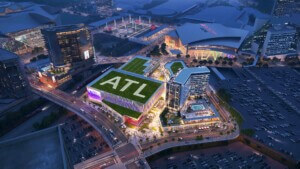Boston’s Fenway Park opened on April 20, 1912—five days after the Titanic sank. Superstitious Bostonians say this unfortunate timing cursed the Red Sox from winning a World Series for 86 years until 2004; an annum forever engraved in Beantown’s collective memory. Fast forward several decades (and a few championships later), the streets surrounding “the cathedral of Boston” are set for a major development.
This July, the Boston Planning and Development Agency (BPDA) gave the green light for a $1.6 billion project next to the Green Monster. Fenway Corners by WS Development will deliver eight new buildings, adding 1.6 million square feet of “new space including offices, storefronts, residential units, street upgrades, and new pedestrian and public space,” according to Front Office Sports, the project’s co-developer and owner of the Boston Red Sox. Ample amounts of space for “research and development labs” to help grow the city’s bustling tech industry will also be included.
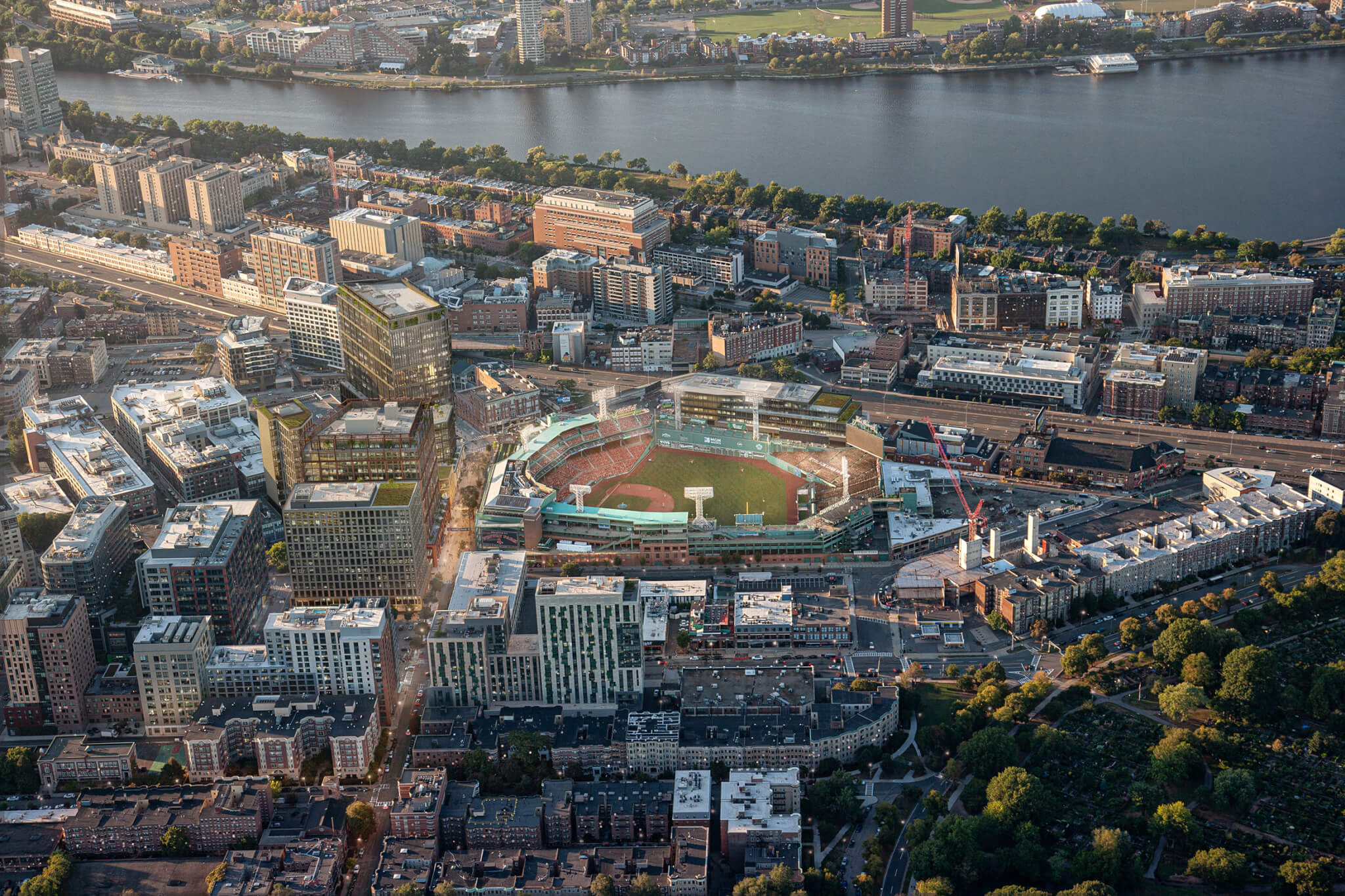
Sasaki, Morris Adjmi, and James Corner Field Operations paired up with WS Development for the masterplan. Fenway Corners will include 266 residential units, 53 of which will be affordable. It will be reachable from the T’s Green Line at Kenmore Station and the Lansdowne Commuter Rail Station on the Purple Line, a transit hub that connects passengers from Greater Boston to Fenway Park on game nights. The Boston Globe reported that an additional 500,000 square feet of programming could be approved following the passage of the Fenway-Kenmore Transportation Action Plan to assuage traffic congestion in the area.
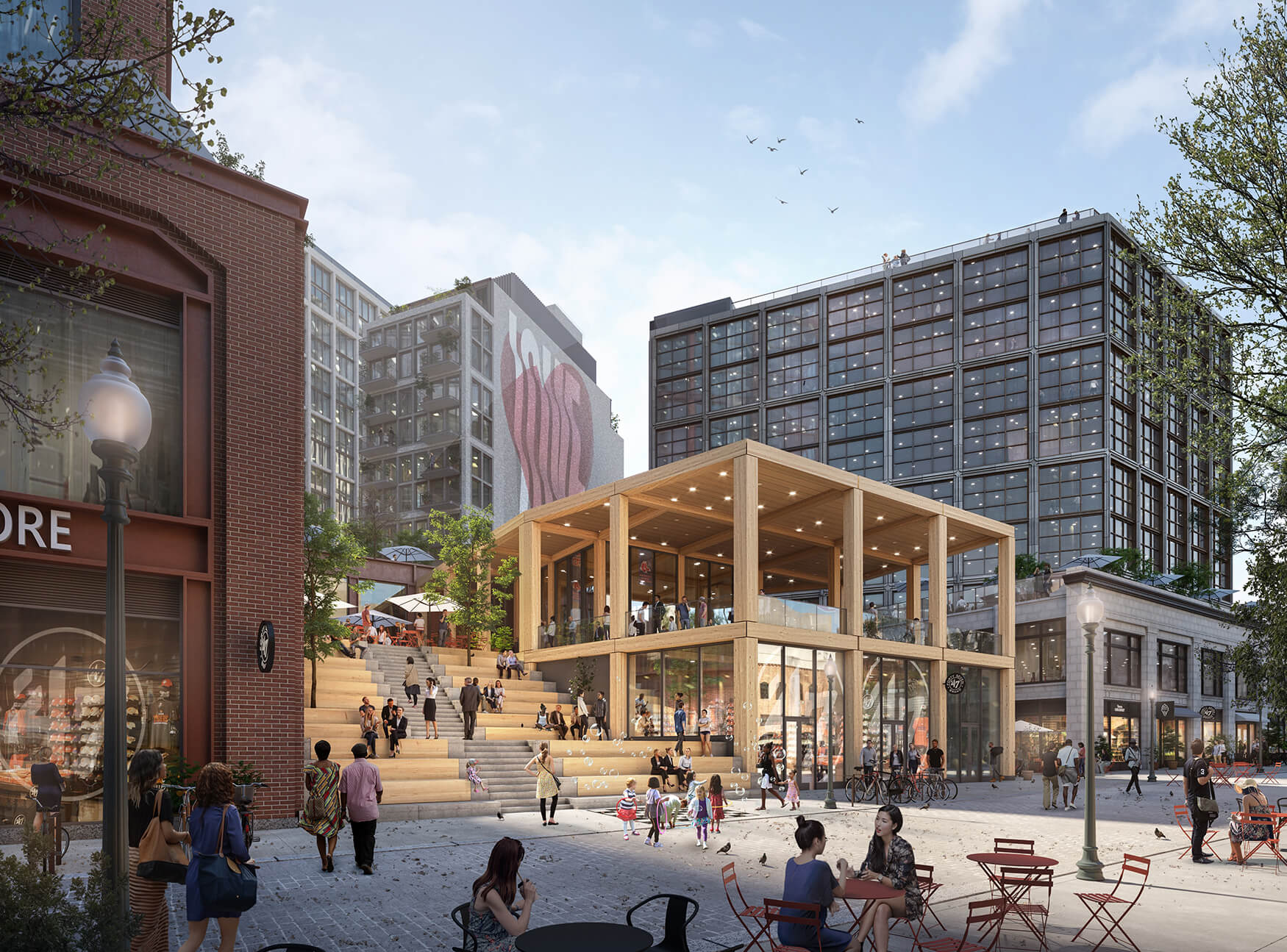
The streets surrounding Fenway Park have been changing for some time now. In the 1990s, the area was notorious for its bucket-of-blood bars, raucous crowds, and t-shirt vendors hawking “Yankees Suck” merchandise featuring crude jokes about Derek Jeter, Roger Clemens, and Alex Rodriguez. When Red Sox owner John Henry bought the franchise in 2002, making Fenway more family friendly was paramount in his plan for the franchise’s reconstruction.
In the years that followed, bookies selling tickets outside Fenway’s gates disappeared, and so did the brawling t-shirt vendors. Murky parking garages, derelict industrial buildings, and local watering holes were replaced by luxury condominiums and a few retail chains. Meanwhile, ticket prices at Fenway reached astronomical levels, making a day at the ballpark an out-of-reach activity for many.
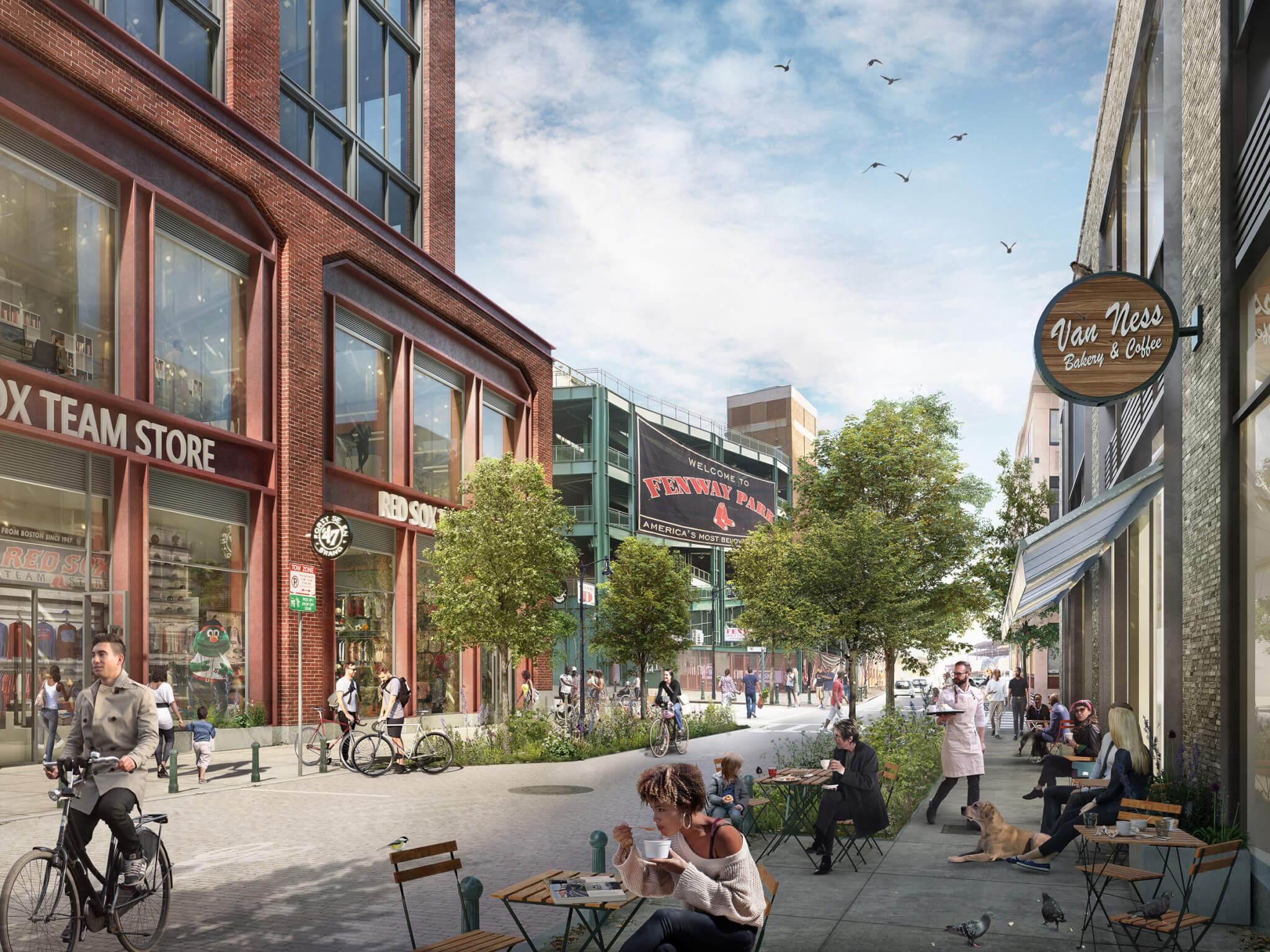
In 2017, Henry, alongside Black civil rights leaders in the city, renamed Yawkey Way—a pedestrian thoroughfare behind the Green Monster eponymously named after former Red Sox owner Tom Yawkey, someone who Jackie Robinson once called “the most bigoted man in baseball”—Jersey Street. A $1.3 billion project by Gensler, Fenway Center, followed in 2021 and redefined the city’s skyline, ushering in a slew of new businesses. Franchises like Tasty Burger, Wahlburgers, Pizzeria Regina, and Target have since moved to Fenway, adding new, non-game day programming.
Today, the eight new buildings at Fenway Corners will abut Jersey Street, Brookline Avenue, and Van Ness Street which, at present, consist of a few parking lots and existing mid-rises that date back to the 1900s. A decade ago, the proposed buildings by WS Development, ranging between two- and nineteen-stories, might have seemed out-of-place in Fenway and Boston more broadly—a historic, compact city known for its squat skyline where the tallest buildings in many neighborhoods are still church steeples.
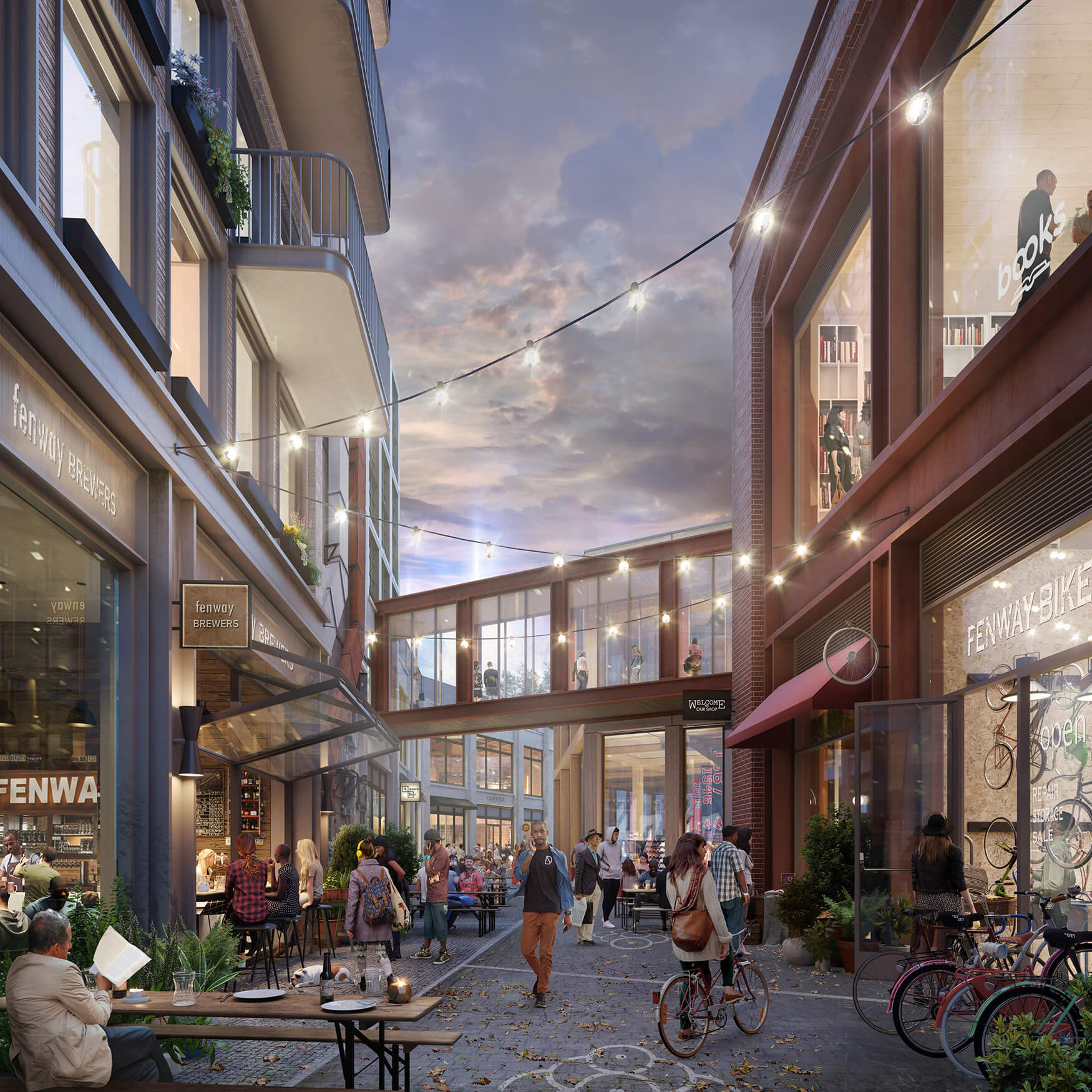
The hulking volumes made of glass and steel will aesthetically match other projects built near Fenway in recent years. Take for instance Boston University’s new Center for Computing & Data Sciences, a $305 million project that made waves in Boston with its materiality and dramatic setbacks, an architectural feature which earned its new nickname, “the Jenga tower.”
Yanni Tsipis, Senior Vice President at WS Development, told local reporters that Fenway Corners “will feel welcoming to all, and unapologetically pedestrian-oriented. Fenway Park is one of the great icons of our city—one of the places that all Bostonians can be proud of. So why not make its front door the welcoming and diverse place that it should be all year round, in service to the whole city?” BPDA Board Member and former President of the Boston Architectural College Ted Landsmark applauded WS Development for their “thoughtful and inclusive process that has brought together folks from various communities throughout the Fenway.”
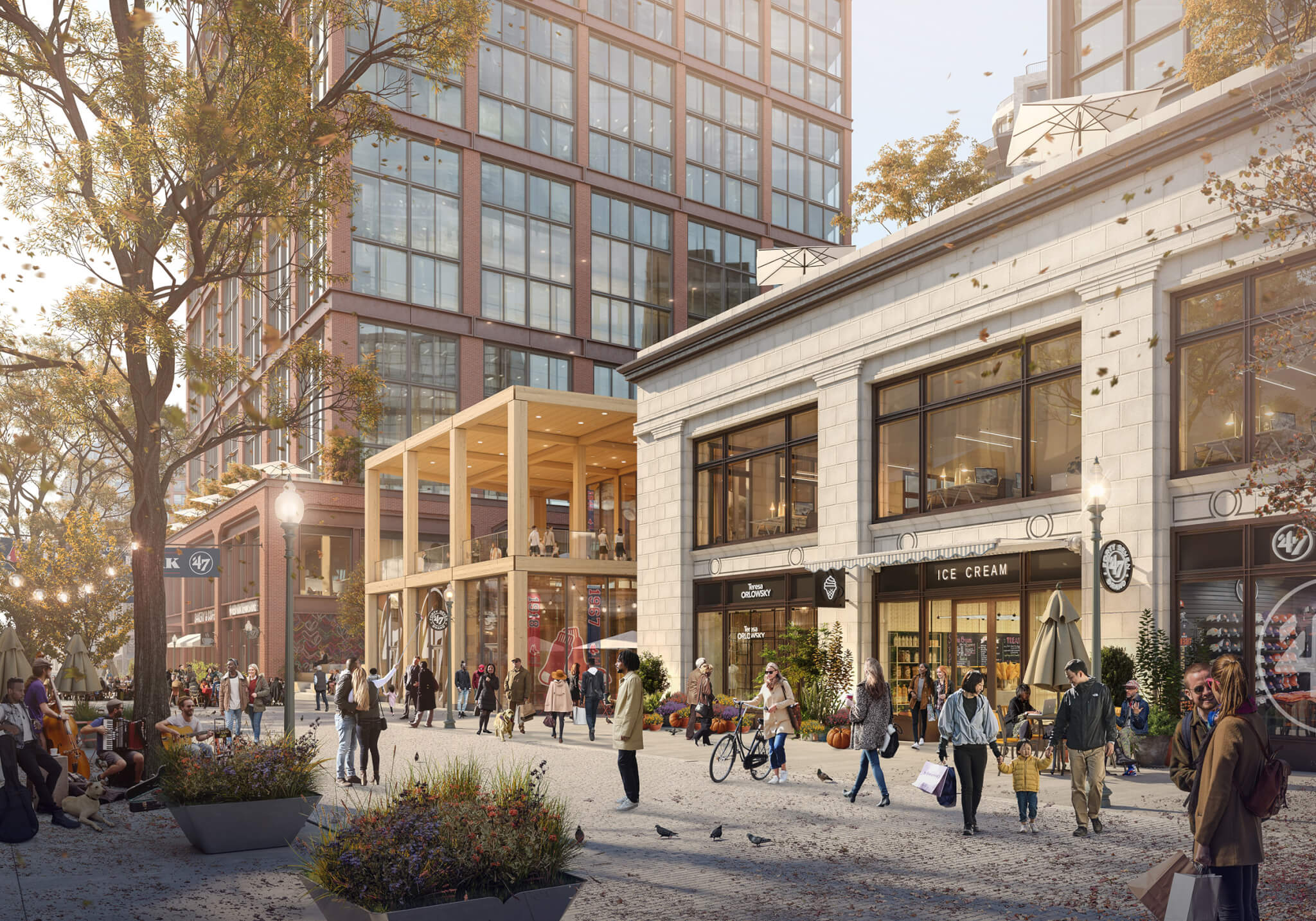
The megaproject however is just one of several large-scale developments happening around ballparks in the United States. The Baltimore Orioles just made a deal with the Maryland Stadium Authority to “expand and revitalize the Camden Yards campus,” the Atlanta Braves’ announced plans in 2022 to build a new 250,000 square foot office tower outside their new stadium, Truist Park, a plan which developers hope will create “Atlanta’s Premiere Entertainment District.” And in Oakland, California the Athletics may forgo proposals to overhaul its stadium after the franchise announced plans to move its home field to Las Vegas this year.
Back in Boston, following the recent BPDA decision to green light it, Fenway Corners will be brought before the Zoning Board of Appeal in August for final approval.








